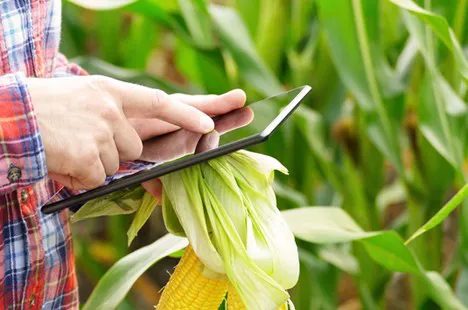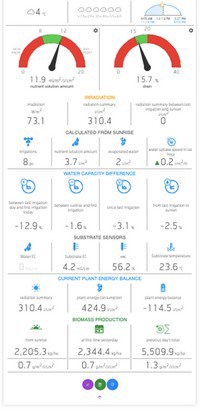As many other industries, the greenhouse industry is facing huge problems such as higher wages, the shortage of labor, changing workforce habits, profit expectations, need of higher productivity, increasing competition. "Technology companies were the first who tried to tackle the new challenges with flexible working conditions, agile working methods, better software products, and digitalization," says András Újszászi, CTO with Gremon Systems.
He explains how the greenhouse industry is special, because most of the activities require personal attendance, and the mentioned modern workforce management patterns cannot be applied.
"If we are looking at production companies like car factories, it is possible to see similar patterns to greenhouses such as personal attendance, repetitive workflows, time pressure, etc. These factories are first in solving the above-mentioned problems with digitization, robotization, workflow and logistical optimization."
"Regarding the workforce in many industries knowledge and abilities are changing and part of the work force are not trained mechanics any more rather managers who understand the ecosystem of the production plant, and are able to manage this ecosystem containing IoT devices, robots, ERP systems, production management systems, etc. The regular daily work is based on data analysis, decision-making is based on collected data, and fast activity in order to keep the production on track."
According to András , the decision-making process is a very demanding and responsible job. "Based on data analysis it is becoming more and more effective yet remaining a highly proactive activity."

Acting before something happens is what affects productivity.
András is sure that in the near future (the next couple of years), these innovations will infiltrate to the greenhouse industry, because currently most of the plants are operating as they did 40 years ago and the requirements can only be met by using new technologies, and by adapting a proactive approach instead of a reactive one.
"All the innovative decision-making solutions are based on data collection, data management and data analysis. Imagine that Bosch is able to radically decrease the downtime of his machines by introducing a predictive maintenance solution. Meaning they collect data from the machines on heat, speed, noise they are producing, etc. Based on these data they are able to figure out which part of the machine will probably go wrong and will affect the production."
'Regarding greenhouse management this kind of operation can help proactively manage all the conditions in the plant like irrigation, humidity, light conditions, growth of biomass, etc. If we collect enough data from the greenhouse, after a couple of months we will be able to see the patterns of greenhouse conditions and the consequences of our activity."
This way the necessary decisions and activities can be made based on data. "This is the “predictive maintenance” in the greenhouse."

What do you need to reach this stage of greenhouse management?
András explains how first, you have to start collecting data from your greenhouse in order to be able to set up patterns and match these patterns with your activities and production results. "As millions of data are collected in a greenhouse on daily basis it is necessary not to analyze data in Excel or other traditional software but use a software solution like Gremon Digital to be able to see behind the data and draw conclusions."
Based on interviews with agronomists it is an interesting question how they managed to produce 57 kg/sqm tomato in on year and only 65 kg/sqm in another year. "No one was able to explain what was affecting the growth or the decrease in production because “we did the same both years” – they said." This question can be answered based on data analysis, and the better production can be repeated in the years to come – because we know exactly what conditions we were experiencing and what activities we made.
Data is the new farmer
He continues to explain how machine learning and artificial intelligence will provide the ultimate proactivity and how it is leading toward autonomous greenhouse operation.
"Artificial Intelligence (AI) and Big Data are close friends to each other, AI is unable to function efficiently without historical data. So, the first step toward AI supported decision making and proactive greenhouse management is collecting data from as many sources as we can."
According to András, data regarding temperature, CO2, irrigation, VPD, plant temperature, biomass weight, plant condition, climate computer data & human labor is needed.
"Based on all the collected information, after several data cleaning processes, a homogenous data collection will be available which is a good base for AI to start working with. A logical question comes up, how long should I collect data to have a good data pool? Usually 6 – 10 months of data collection is necessary, because AI must be able to prepare a lot of patterns from the collected data, the interactions, and the results."
 As an example of a pattern he sketches what will happen if the P-band value is high , the humidity is increasing, the VPD value is getting low, plant breathing and water absorption Képernyőfotó 2019-11-21 - 11.13.19 is slowing down and the CO2 fixation is slowing down.
As an example of a pattern he sketches what will happen if the P-band value is high , the humidity is increasing, the VPD value is getting low, plant breathing and water absorption Képernyőfotó 2019-11-21 - 11.13.19 is slowing down and the CO2 fixation is slowing down.
"The climate computer opens the ventilation, the vapour leaves through the fans, the cool air comes in through the fans and the CO2 escapes through the fans, meaning the concentration is getting lower. The heating starts operating.
As a result, during this cycle CO2 is lost as well as plant speed. Extra heading is needed.
"Based on historical data, AI is creating hundreds of patterns like the ones mentioned, with more than the mentioned variables. The number of patterns and variations are always growing, this is how AI is becoming more and more efficient, this is how it is able to advise the optimal steps in order to keep all the optimal conditions between normal values in the greenhouse", Andras explains.
When using an AI based solution, the results will be different. "Basically, you will see alerts and suggestions, depending on the seriousness of the conditions."
On the dashboard you will see suggestions as:
· Keep + 0.7 Celsius night temperature
· The energy screen should be opened 15 minutes earlier next morning
· The first irrigation should start at 7.15 am
"AI will always try to match actual conditions and data to match one or several patterns and see what the best reaction was that resulted in e.g. the best daily biomass growth (or some other important parameter)."
Another important issue is, that AI systems are always fine tuning the patterns and will learn from new experiences, which resulted in better predictions than the previous one.
What can be the result of a data driven greenhouse management?
"First, you will be able to experience a constant yield, and predictable business. You will be able to calculate and predict the cost of your resources much better, also manage the human resources more efficiently."
"AI is a solution for greenhouse owners and managers that allows them to focus on other important issues in their business., For consultants this is a big advantage to give exact advices based on data. AI is still a machine that can do much more calculations than humans, but all the algorithms making AI work is made by IT professionals and consultants because the knowledge is on their side, they will be the key participants of the AI ecosystem."
For more information: Gremon Systems
Gremon Systems
János Lóczi
janos.loczi@gremonsystems.com
www.gremonsystems.com
